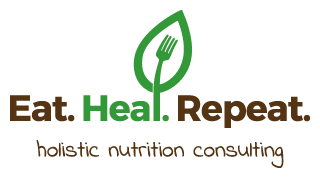With temperatures changing, many of us are finding themselves craving more warming foods and carbs. Personally, I can’t get enough of hearty stews, thick chilis and velvety fall vegetable soups, now that the nights are getting cooler and we’re digging out our fleece sweaters. While I find it easy to forgo gluten-heavy foods in summer, when juicy fruits abound and cooling yogurt is a welcome snack, it’s a different story once fall hits. I want to dip chunks of hearty bread into some fresh, home-made pesto, feel like I’m missing out if I can’t mop up the last spoonfuls of soup with the crunchy end-piece of a fragrant loaf, and drown in self-pity at my favorite bakery, where I go for the aroma of baked deliciousness these days, rather than one of the few gluten-free options.
No wonder, then, that I’ve been on a hunt for the flavors and texture of a rustic European bread, but without the gluten. In fact, my mission these days is to recreate several childhood favorites without the grains, to avoid cross-reactions and cross-contamination. This recipe was inspired by the “Life-Changing Loaf of Bread” at My New Roots. With the addition of a few spices no respectable Austrian farm bread can do without, I feel like I’ve found the holy grail of satisfying good-for-me fall treats. This bread is dense and filling, still moist on the inside, and has a wonderful crust.
A small challenge that took some experimenting was making this loaf grain-free for my husband, for whom oats (even gluten-free ones) are out, too. If you have a gluten-sensitivity, I would recommend going through the trouble of finding certified gluten-free buckwheat, instead of getting it in bulk. Even though buckwheat is actually a seed related to rhubarb and sorrel (despite the ‘wheat’ in the name), and therefore 100% gluten-free, cross-contamination can be a problem during processing, packaging or transport. The GF label makes sure you are not going to be ‘glutened’ by this bread.
The recipe is delightfully quick and simple, once you have all the ingredients together. It helps to let it sit and ‘proof’ in the loaf pan for a couple of hours before baking, although the hot water speeds up this process, and I’ve had good success even when I went straight into the oven with the dough, once it was all kneaded together.
Ingredients:
Dry:
2 1/4 cups raw buckwheat seeds, pulsed a few times in a food processor OR 2 cups buckwheat flour (do not use kasha, a.k.a. toasted buckwheat)
1 cup raw, hulled sunflower seeds
½ cup toasted hulled pumpkin seeds (a.k.a. pepitas)
1 cup mixed chopped nuts (hazelnuts, almonds, pecans)
¾ cup whole golden flax seeds
1/3 cup psyllium seed husk (see note)
¼ cup poppy seeds
3 tsp chia seeds
2 tsp pink Himalayan salt
½ teaspoon each crushed fennel, caraway and coriander
Wet:
2 Tablespoons maple syrup or raw honey
¼ cup melted ghee or extra virgin olive oil
2 ½ cup hot, filtered water
Directions:
- Grease an 8” loaf pan with butter, ghee or olive oil.
- In a bowl, combine all dry ingredients, stirring well.
- In a saucepan, melt the ghee (if using); add the maple syrup and hot, filtered water.
- Pour the liquids into the bowl with the dry ingredients and mix very well until you have a very thick dough.
- Use a spatula to get the dough into the loaf pan. Pound the pan onto your counter a couple of times (to let the dough set), then smooth the top.
- Let the pan with the dough sit on the counter for at least one hour. A tip from My New Roots: To ensure the dough is ready, it should retain its shape even when you pull the sides of the loaf pan away from it.
- Preheat the oven to 390 °F / 200°C.
- Bake the bread on the middle rack of your oven, for 30 minutes. Remove the bread from the oven, get it out of the loaf pan, and place it upside down directly on the rack. Bake it for another 30 minutes.
- Let cool completely before cutting. If you decide to freeze some, slice it first. Then toast individual slices.
Tips:
The psyllium husk acts as a binder for the bread, in place of the gluten found in traditional flour. You can find it in the health food section of most grocery stores, in the laxatives section. While it can be used to improve bowel movements (thanks to its soluble fiber content), it will not have any laxative effect in our Vollkornbrot. It WILL help promote regularity and may help you manage cholesterol levels, glycemic (blood sugar) balance and weight, as recent research suggests.
This dough also makes tasty, crispy, crunchy and nutty crackers. After the recommended 2 hours of resting the dough, you can roll it out between two sheets of parchment paper. You can then bake it in the hot oven until golden brown and fragrant (keep an eye on your batch), and break them into chunks. I like to run a pizza cutter through the dough before baking, which makes it easier to get nicely shaped crackers.
To make this dense bread more digestible and some of the nutrients more readily available, consider soaking, sprouting or even fermenting the nuts and seeds before you bake with them. For the hows and whys of sprouting, a list of soaking times and sprouting recommendations specific to the different kernels, check out this helpful link.
Contains: Nuts, seeds, dairy (if using butter or ghee; substitute olive oil to make it dairy-free). I do NOT recommend that you eat this bread while you are trying to heal gut inflammation or a leaky gut, on an elimination diet or on the Autoimmune Protocol.

